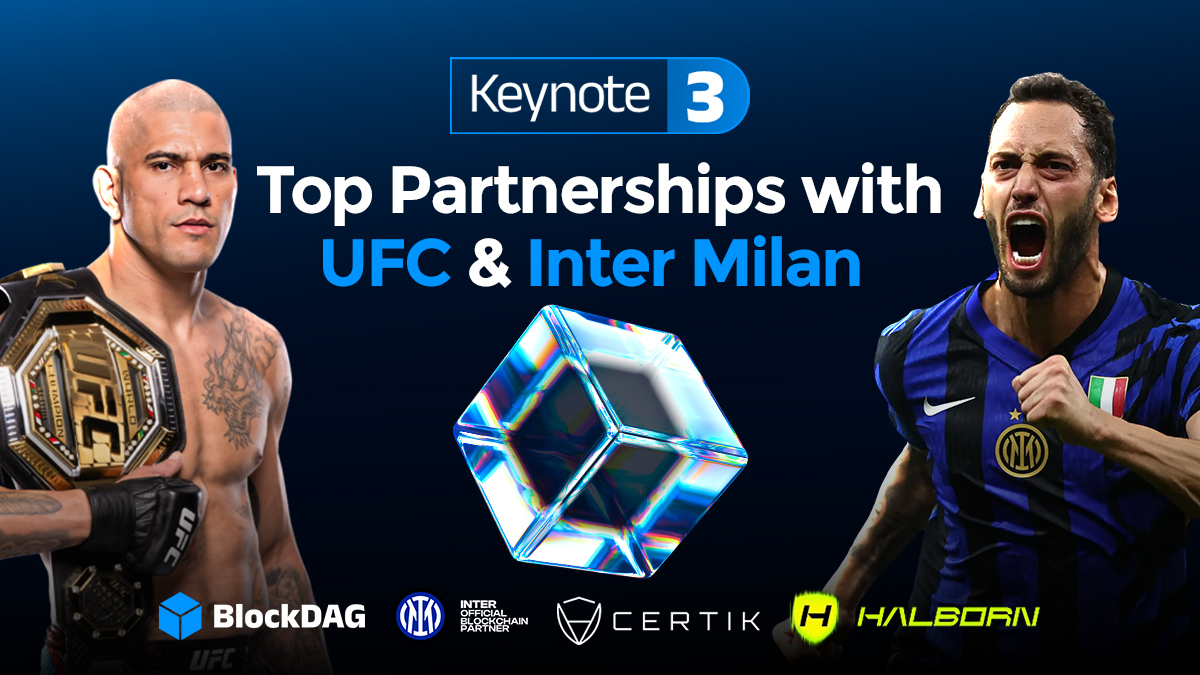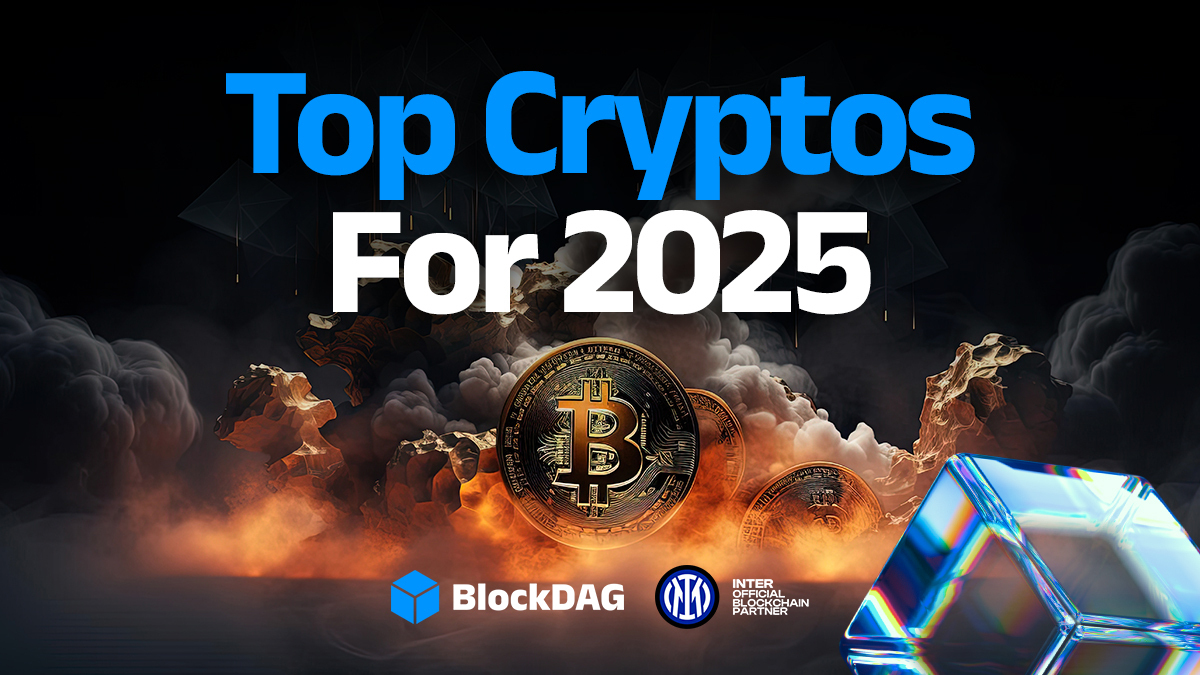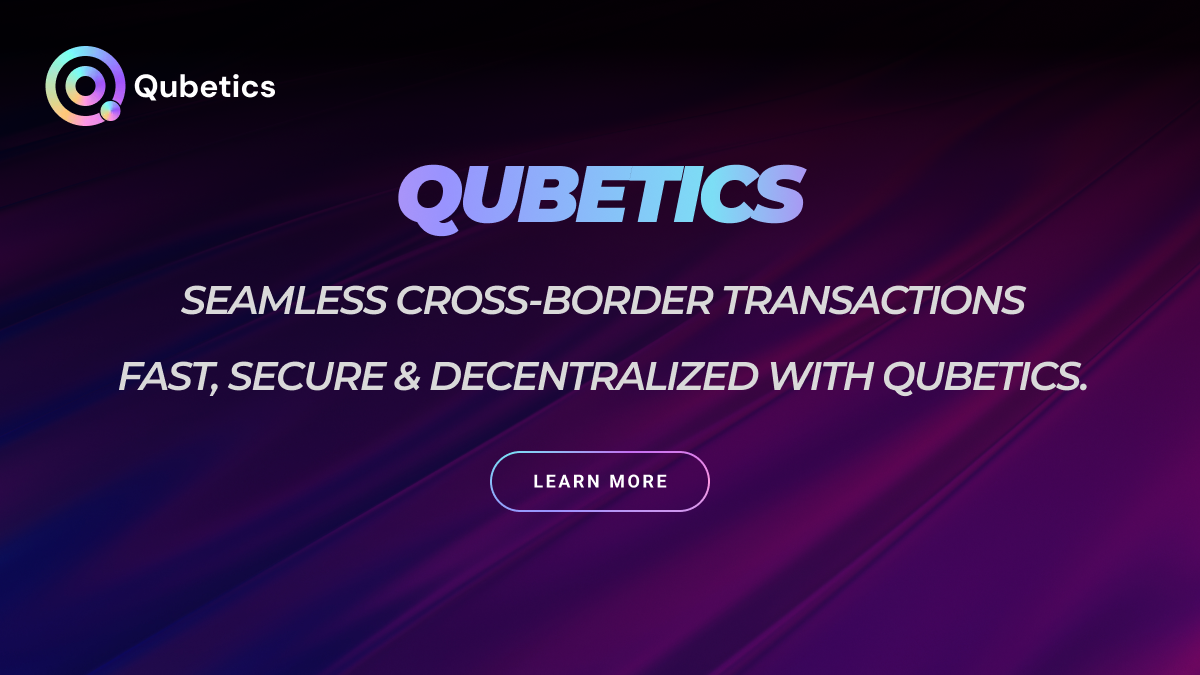
Qubetics Presale Is Turning Heads- Most Potential Crypto to Watch as Tezos and Bitcoin Cash Focus on Long-Term Utility
As digital finance grows deeper roots in real economies, there’s a quiet shift happening. It’s no longer about chasing moonshots or betting on hype. The crypto community is becoming more selective—leaning into platforms that offer real-world use, frictionless integration, and long-term infrastructure value. Projects that serve a purpose, solve pain points, and deliver tools for professionals and creators are where attention is locking in.
Recent developments have reshaped what it means to hold value in crypto. Layer 1 projects like Tezos continue refining their self-upgrade mechanisms, attracting builders who crave sustainability. Meanwhile, Bitcoin Cash has stuck to its guns as a peer-to-peer payments workhorse—carving a unique spot among those looking for fast, affordable on-chain transactions. But a newer contender is grabbing serious attention for its utility-packed design and cross-chain capabilities. Qubetics ($TICS) is stepping into the spotlight—not just with a presale that’s raising eyebrows, but with interoperability features that address some of blockchain’s biggest headaches.
Unlike legacy chains that silo data and assets, Qubetics is breaking down the walls between ecosystems—and giving builders a way to create cross-chain dApps without losing their minds over compatibility. And right now, its presale isn’t just active—it’s accelerating.
Qubetics ($TICS): Interoperability That Actually Works in the Real World
Qubetics wasn’t built for hype cycles or one-off pump runs. It was designed for functionality—specifically interoperability—and it delivers by allowing smart contracts and assets to move seamlessly across chains. Whether you’re building on Ethereum, Solana, or Cosmos, Qubetics lets you integrate, communicate, and scale without needing a separate dev stack for every chain. That’s a game changer for startups, SMEs, and enterprise teams who don’t want to burn cash on extra backend complexity.
Take a logistics firm in São Paulo that wants to issue asset-backed tokens on Solana, but store key documents on Arweave. Or a fintech app in Mexico City that wants to bridge Ethereum-based stablecoins with compliance tools on Cosmos. Normally, this kind of build would take months and custom wrappers. With Qubetics, it’s plug-and-play through its modular middleware. Developers write once and deploy across supported chains with minimal adjustments.
This isn’t just big for builders—it’s big for business. For example, an Argentinian legal tech startup could run contract automation across multiple chains, ensuring jurisdictional compliance without multiple deployments. And individual users? They can use one wallet to interact with DeFi tools on different blockchains. No switching wallets, no chain-specific limitations.
That level of frictionless interoperability makes Qubetics a serious contender for most potential crypto in 2025. It’s not just theoretical—it’s already working in testing phases and attracting early partnerships across finance, logistics, and even retail sectors in Latin America.
Qubetics Presale Milestone and ROI Overview
The Qubetics crypto presale is currently in Stage 31, and the numbers are stacking up. Over 509 million tokens have been sold to more than 25,200 holders, pulling in $16.4 million+ so far. The current price of $TICS is $0.1902 per token, and interest is climbing with every stage.
Those who got in at Stage 1 at just $0.01 are now sitting on a 1802% return—and it’s far from over. Participants still have a shot to join the presale at this stage and benefit from steep ROI potential. At $0.1902, entry is still considered early by analyst standards.
Should $TICS hit $1, that’s a 425% ROI. At $5, the return climbs to 2527%. Projections at $6 show 3053%, while $10 offers 5155%. And if $TICS lands at $15 after the Mainnet launch, that’s a massive 7783% ROI. Analysts are aligning on this momentum not because of speculation—but because Qubetics is solving what other chains couldn’t.
Among all current projects in development, it’s the most potential crypto with real-world interoperability and multi-chain infrastructure that’s already in motion.
Tezos (XTZ): Self-Upgrading and Built for the Long Haul
Tezos isn’t the kind of project that makes noise just to trend. It’s a slow-burn, highly functional chain that’s made a name for itself by pioneering on-chain governance and self-amendment. In simpler terms, it upgrades itself without needing forks—making it one of the most stable and future-proof platforms out there.
What’s made Tezos a favorite among institutional adopters and independent builders is its predictability. Changes to the protocol—like gas optimizations or consensus improvements—are proposed and voted on by the community itself, then implemented through the chain’s own logic. No contentious splits, no hard forks, just smooth evolution.
This approach has been a hit across use cases like asset tokenization, gaming, and even green NFTs. Tezos’ low-energy proof-of-stake model also gives it strong environmental cred, especially in markets like Europe and Latin America where sustainability matters more and more to buyers.
For teams launching blockchain-based platforms that may need years of guaranteed support and stable infrastructure, Tezos is often the go-to. Its ecosystem is growing, with developer toolkits and user interfaces that prioritize clarity over clutter. While it may not shout the loudest, Tezos keeps delivering—and that’s why it still ranks among the most potential crypto projects even after years in the game.
Bitcoin Cash (BCH): Peer-to-Peer Money That Still Means Business
Bitcoin Cash may have started as a fork of Bitcoin, but it’s carved its own identity as a true peer-to-peer cash system with a practical, down-to-earth mission. Its larger block size allows for faster transactions and lower fees, making it especially relevant for day-to-day spending and merchant adoption.
In Latin American countries where traditional banking access is spotty or riddled with fees, Bitcoin Cash offers a real alternative. For years now, it’s been a favorite in border regions, informal markets, and remittance corridors. Local vendors and freelancers often accept BCH because it settles fast and avoids middlemen—making it ideal for communities that rely on direct digital payments.
Bitcoin Cash also maintains tight alignment with the original goals of cryptocurrency: usable, simple, and peer-controlled. It doesn’t try to be a smart contract platform or DeFi hub—it sticks to payments, and it does it well.
It may not be flashy, but its utility in real-world economies gives it lasting value. The community remains active and grassroots-driven, and BCH wallets are widespread across Android and iOS, with many supporting QR-based payments and microtransactions. Among backers looking for projects that stay focused and effective, BCH continues to be one of the most potential cryptos with deep roots in usability.
Final Thoughts
When the noise clears and the TikTok trends fade, what’s left are projects like Qubetics, Tezos, and Bitcoin Cash—each tackling different but essential pieces of blockchain’s future.
Qubetics is racing ahead with its interoperability-first model, real-life use cases, and a presale window that’s still open for community members who want in early. Tezos has proven its worth by evolving gracefully and keeping developers and institutions alike engaged. And Bitcoin Cash? It’s held its ground by sticking to its roots—offering a simple, effective form of digital money that actually works on the ground.
Each of these has earned its place among the most potential crypto projects for 2025—not just for speculation, but for real, functional adoption. For those looking to back meaningful tech with upside baked in, now’s the time to look beyond hype and focus on value.
For More Information:
Qubetics: https://qubetics.com
Presale: https://buy.qubetics.com/
Telegram: https://t.me/qubetics
Twitter: https://x.com/qubetics
FAQs
1. What makes Qubetics the most potential crypto to watch in 2025?
Qubetics delivers real-world interoperability, allowing assets and applications to move across multiple blockchains seamlessly. With a rapidly growing presale and strong developer tools, it’s positioned to solve pain points that others haven’t touched.
2. How does Tezos stand out in the current crypto market?
Tezos features a self-amending blockchain that upgrades without forks. Its focus on formal governance and protocol stability makes it ideal for long-term adoption by enterprises, institutions, and public infrastructure projects.
3. Why is Bitcoin Cash still considered a top utility coin?
Bitcoin Cash remains one of the most used cryptocurrencies for peer-to-peer transactions. Its larger block size enables fast, cheap payments—making it a practical tool for merchants, freelancers, and buyers worldwide.
4. Can new participants still join the Qubetics presale?
Yes, Qubetics is currently in Stage 31 of its presale. $TICS tokens are available for $0.1902, and early-stage participants are already seeing returns of over 1800%. The presale still offers a strong ROI window.
5. What’s the key similarity between Tezos and Bitcoin Cash?
Both emphasize stability, long-term usability, and decentralization. While Tezos focuses on protocol-level governance, Bitcoin Cash centers on accessible digital cash for everyday use. Each offers consistency over hype.
| Disclaimer: The text above is an advertorial article that is not part of kanalcoin.com editorial content. |









